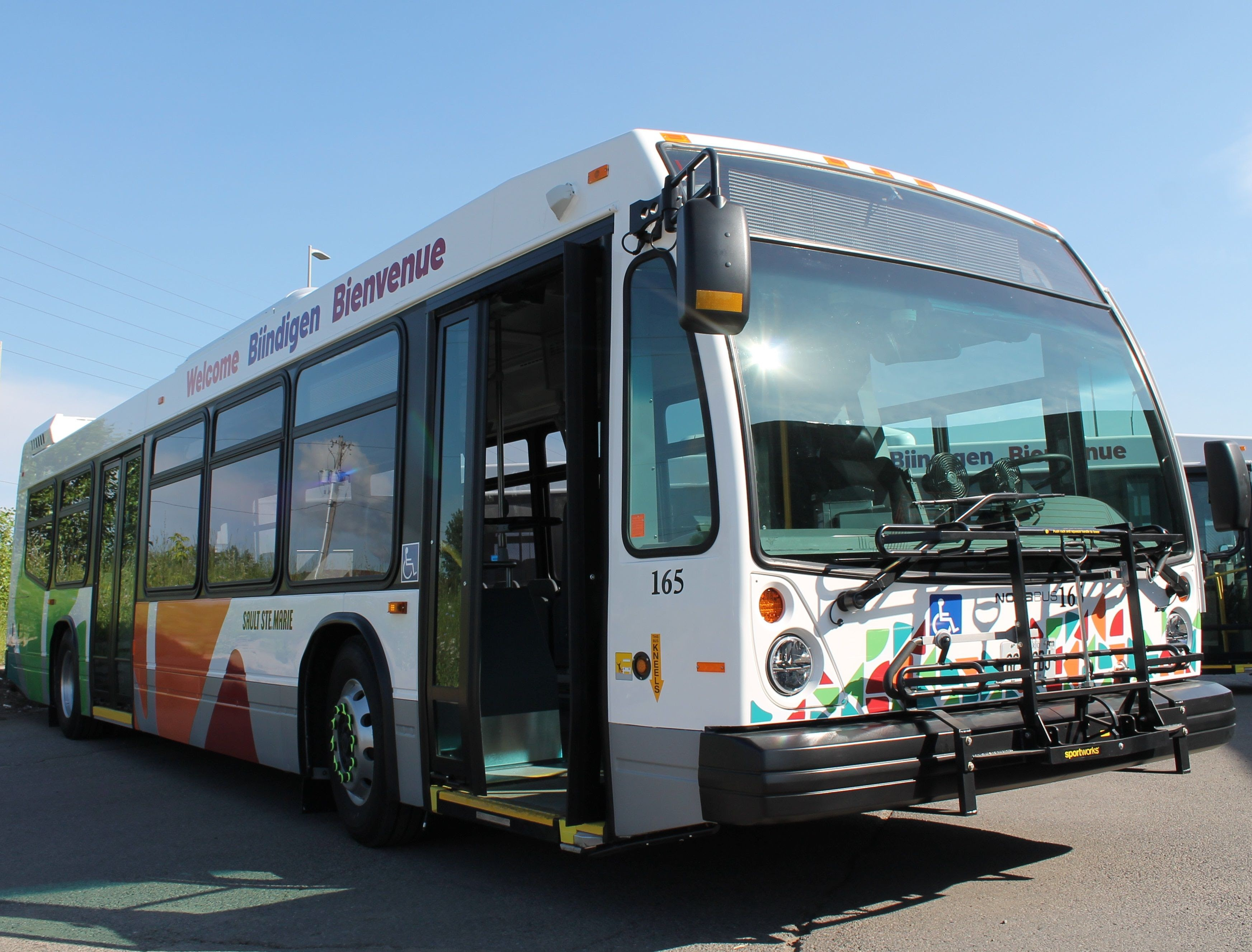Don't miss another podcast. Sign up here.
Forty-foot buses navigating a city of about 73,000 people — probably not the first thing that comes to mind when you hear the word “microtransit.” And yet, for the city of Sault Ste. Marie (affectionately known as “the Soo”) in Northern Ontario, Canada, it’s the perfect fit, serving as a prime example of both small-town innovation and the boundless applications of TransitTech.
Sault Ste. Marie Transit Services got its start in 1941 as an agency primarily tasked with commuting workers to and from the Algoma Steel factory. In the eighty years since, it has grown to offer seven conventional bus routes, running 18 hours a day, seven days a week, alongside a paratransit service for residents with different abilities. Instead of steelworkers hauling tools, now the vast majority of the city’s public transit riders are students lugging their books to and from Sault College and Algoma University. This could essentially be the future of transit. Nicole Maione, Manager of Transit with the Corporation of the City of Sault Ste. Marie, explained that the two years of research her office conducted clearly indicated that on-demand “could essentially be the future of transit.” As a result, the Soo decided to launch its own on-demand pilot this past September. Maione and her colleagues introduced the service strategically, targeting a particular window in the week that historically suffered from low ridership: Sunday evenings, from 7:15pm to midnight.
Launching an on-demand pilot in this particular time frame, when most of the Soo’s restaurants and businesses are closed, allowed for experimentation without the risk of large-scale disruption. It was also designed for a more efficient use of the city’s buses at a time when they were underutilized and required to make unnecessary stops.
To use the service, riders simply download the Sault Ste. Marie On-Demand app ( iOS and Android ) and enter their location and desired destination. The app then provides users with pickup and dropoff points a short walking distance away. Riders can also track their vehicle in real-time, give feedback after a ride through the app, and pay for their trips using either cash or an existing transit pass.
 In addition to thoughtful service design, informing the public of the service change was critical to success. “We did have a very intricate marketing plan that began two weeks prior to the launch,” Maione explained. Those efforts included press releases and radio, online, and social media advertising, as well as posters in local high schools and universities, on buses, and in all locations where bus passes are sold.
In addition to thoughtful service design, informing the public of the service change was critical to success. “We did have a very intricate marketing plan that began two weeks prior to the launch,” Maione explained. Those efforts included press releases and radio, online, and social media advertising, as well as posters in local high schools and universities, on buses, and in all locations where bus passes are sold.
By the time the September 8th launch rolled around, you would’ve been hard-pressed to find anyone in the Soo who hadn’t received a pamphlet on the service, been served an ad on social channels, or been updated in-person by a member of the city’s transit team. But Sault Ste. Marie Transit Services didn’t stop there. Maioine noted that “transit staff were available out on site, not just the two weeks prior to launch, but afterwards as well to continually educate the public.”
Aside from awareness-raising, another challenge the Soo faced was the size of the buses the on-demand service would use. While other communities often include smaller residential roads in their on-demand routing, Sault Ste. Marie On-Demand focused on using the same wide roads their fixed route service uses, due to the restricted mobility and increased noise that come with the larger buses they operate.
Sault Ste. Marie therefore used current transit infrastructure by keeping all pickup and dropoff points to existing bus stops. “It did definitely pose a challenge, however we made it work.” Maione explained, noting that one key advantage of using city buses has been higher utilization rates, as the buses are able to transport many more riders at one time than a smaller vehicle would. “Overall, residents seem to have really adapted well — specifically the students. They really seem to enjoy this service,” said Maione. “A vast majority of them seem to prefer this.”
With the introduction of Sault Ste. Marie On-Demand, wait times have been reduced from one hour to an average of 14 minutes and, even with this substantial increase in efficiency, the Soo has not compromised the quality of their service. As Maione put it, “our ratings are typically about four out of five stars, which we’re quite proud of.” Wait times have been reduced from one hour to an average of 14 minutes. When it comes to future growth, Maione said that she envisions on-demand technology being used more and more throughout the transportation industry.
“Agencies are going to continue to try and look for a better, more efficient way to service their communities, and I include Sault Ste. Marie in that. At this point, we’re continuing Sunday nights; however, based on our fleet, we’re going to definitely look to expand,” she shared. As Maione and her colleagues conceive of growing their service, it may be in the hours they operate, the areas they serve, and/or in the vehicles they use to serve them. The expansion has limitless potential. “I think there are just so many different models that you can utilize with on-demand — it provides so many more opportunities for transit,” Maione said.





%206.png?width=71&height=47&name=The%20Buzz%20Blog%20Hero%20(1750%20x%201200%20px)%206.png)